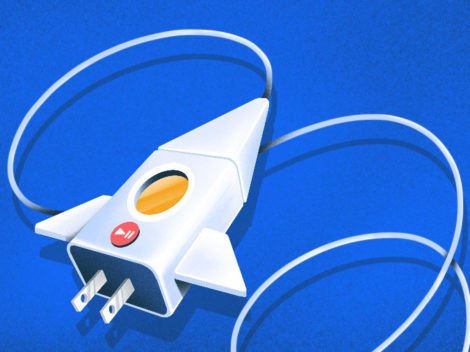Morning Markets: Uber’s hundreds of layoffs ahead of earnings are a reminder that the balance between growth and profitability requires one to improve if the other deteriorates.
Yesterday news broke that Uber is eliminating around 400 jobs in its sales and marketing team, a group that numbered around 1,200 before the reductions.
Uber reports its Q2 2019 earnings on August 8. We’ll know then if the company is signaling the cost cuts ahead of time to show investors it is serious about spend reductions. Or if they are yet another cost that Uber is cutting after reducing others.
Subscribe to the Crunchbase Daily
Questions regarding Uber’s profitability have stuck to the company over the last year, through its public offering and beyond.
Market worries concerning Uber’s stiff losses — over $1 billion in negative net income in the first quarter alone — have accelerated as the company’s revenue growth has decelerated. The faster a company grows the more money it can lose without spooking investors; losses in the face of rapid revenue expansion are often considered investments.
But when revenue growth stalls (more on Uber’s revenue deceleration here if you’d like a historical primer), losses become less palatable. Uber’s growth has slowed, putting its lack of profitability, and therefore its cost structure, into sharper relief.
Let’s remind ourselves of how much Uber spent on sales and marketing recently, how much it spends compared to historical results, and where that money goes. The lesson here for private companies is simple: Get your losses under control if you want a warm reception from the public markets and aren’t still doubling yearly.
Uber: S&M
First, what is sales and marketing (S&M) at Uber? A few things. From Uber’s most recent earnings (the 10-Q you can find here), here’s what Uber spends money on in the category:
Sales and marketing expenses consist primarily of compensation expenses, including stock-based compensation to sales and marketing employees, advertising expenses, expenses related to consumer acquisition and retention, including consumer discounts, promotions, refunds, and credits, Driver referrals, and allocated overhead. We expense advertising and other promotional expenditures as incurred.
The company goes on to note that it expects its S&M costs to “increase on an absolute dollar basis and vary from period to period as a percentage of revenue for the foreseeable future.” This gives it enormous flexibility to spend what it feels necessary over time to promote its brand and drive demand for its various product lines including ride-hailing, food delivery, and trucking.
Impact
Uber’s sales and marketing costs can directly impact the firm’s profitability or lack thereof. We can see this in the firm’s most recent earnings.
In Q1 2019, Uber’s “Core Platform Contribution Margin,” or the percent of revenue that Uber’s main businesses (ride-hailing, food delivery, and car leasing) contributed to the company after it paid for itself, was negative. 1
That’s to say that Uber’s core operations were not profitable in the quarter, even before the company counted “indirect unallocated research and development and general and administrative expenses.” Why did the company’s core operations lose money? Here’s Uber:
The overall decrease in our Core Platform Contribution Margin was primarily related to a decline in our Core Platform Take Rate and an increase in sales and marketing expenses as we continue to invest within our Core Platform due to expansion and competition.
So, sales and marketing costs matter to Uber as they impact the ability of Uber as you know it to generate margin; if it spends too much on sales and marketing, Uber’s future profits look mighty distant.
To summarize so far: Uber’s sales and marketing efforts vary in cost over time, Uber expects them to generally rise in dollar terms, and the line item has a big impact on profitability. Now let’s figure out how much Uber spends on S&M.
Costs
Uber spent $1.04 billion on sales and marketing costs in Q1 2019. That figure was up from $677 million in the year-ago period for a gain of over 50 percent. In the same quarter of this year Uber’s net loss came to $1.01 billion, or around the same amount.
Of course, Uber cannot cut its entire S&M budget to reach profitability. But it is useful to understand that the scale of its S&M spend and its net loss are similarly sized; Uber’s unprofitability is going to take lots of work.
Uber has spent more over time on its S&M costs. Indeed, here’s a chart of the line item including data from the company’s S-1/A filing, and its Q1 2019 earnings:

Cutting 400 jobs from that mix should cut spending; reductions in driver referrals would also help. Trims to advertising would also help. Add it all together and I can see Uber shaving the S&M line item by a material number of percent. How soon the reductions in spend will be felt, of course, isn’t clear.
Startups
Uber is the most famous former startup in America today. Its titanic size, famous problems, incredible growth, industry-defining business model, moral questions, and global battles for market share have made it an icon. And yet it is still unable to avoid the profits-versus-growth question.
For smaller, less-well-known startups, the moral is clear. If your growth slows, your losses need to come down. And it is probably better to not wait as Uber has to get started on those cuts. The sooner you start, perhaps the shallower depression from which you’ll need to steer out of.
Sure, there’s a Vision Fund 2 on the horizon, but don’t count on that to cover all your startup’s red ink.
Illustration: Li-Anne Dias.
“Core Platform Contribution Margin demonstrates the margin that we generate after direct expenses,” says Uber, implying that this metric is similar-ish to a gross profit metric.↩

Stay up to date with recent funding rounds, acquisitions, and more with the Crunchbase Daily.











67.1K Followers